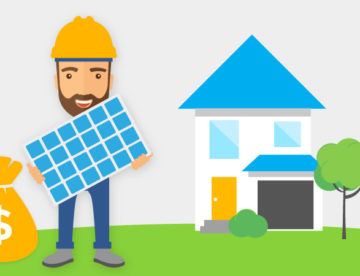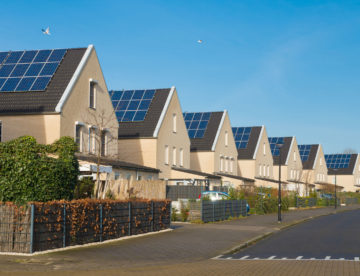Have you received an electric bill that’s shockingly high? Or perhaps you have noticed that your monthly costs have been going up even though you haven’t changed your usage? If you find yourself nodding your head “yes”, here are some things to consider in order to tame that high electric bill.
Is a clerical error the cause of your high electric bill?
If you find yourself with an unusually high electric bill, the first thing you want to check out are your past bills. It’s possible that the utility may have made an error or accidentally charged you too much. Compare your electric usage over the past 13 months with your usage for the most recent bill. If your electric usage in the past month is much higher or lower than usual and you haven’t made major changes with regard to the appliances in your home, check with the electric company to see if they made a mistake and need to issue a refund.
On the other hand, if you’ve noticed that your electric bill has progressively gotten higher each month, it’s likely due to rate increases. Over the past few years, the cost of electricity has gone up – as much as 3.2% in 2014 – and is expected to rise by 1.7%, on average, in 2019. That’s according to recent outlooks from the US Energy Information Administration (EIA).
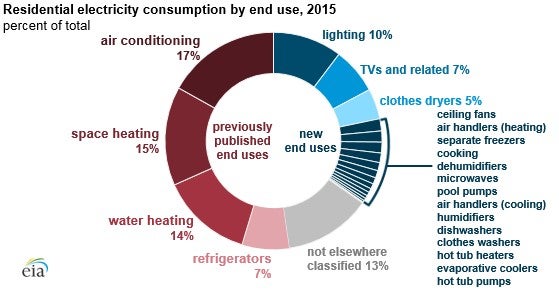
Image source: U.S. Energy Information Administration
Pay attention to monthly taxes and fees
Be sure to check the taxes and fees that have been tacked onto your electric bill, as these costs could quickly add up. The utility may have changed how they charge their customers for electricity, like adding a time-of-use or demand fee, as is the case for some states and areas.
With the addition of time-of-use fees and on-demand charges to your electric bill, you will need to monitor your use of energy-hungry appliances like air conditioners, washers, and dryers.
However, the good news is that it is easy to change how and when you use them. There are even some newer, smarter devices and appliances that can communicate with your electric provider to only operate when electric prices are cheapest.
Old appliances are costing you more than you think
Older appliances are most likely the culprits responsible for racking up your electric bill. New appliances use far less energy, with Energy Star-certified appliances using even less.
The biggest electricity sucker in most homes is the heating and cooling system. In its latest figures, the EIA found that heating and cooling appliances used up to 32% of energy in the average US home, with water heating using another 14% of energy. Lighting accounted for 10% of the average home’s electric use and refrigerators consumed 7% of a home’s electricity. Of the rest of the energy consumed in a home, drying clothes used slightly less than TVs and other electronics.
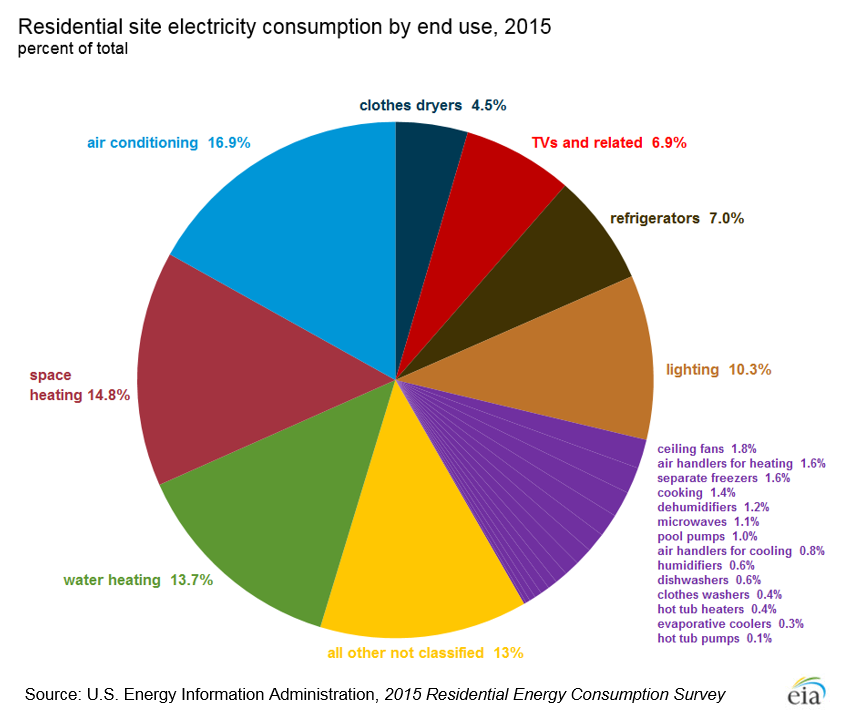
Image source: U.S. Energy Information Administration
Smart appliances, including smart thermostats, are much more energy efficient and are generally relied upon to save people money. Other measures can be taken to reduce those electric costs too, such as installing better insulation or using ceiling fans to help ease cooling costs. Another option is replacing single-paned windows with double (or even triple) paned windows.

Request obligation-free quotes from solar installers near you!
Get Started
Unexpected cost contributors that ultimately add up
Though new electronics are typically more efficient, it is possible that introducing them into the home could result in higher electric bills. Whether it’s a TV, computer, secondary refrigerator or new air conditioning unit, it’s not unusual to see a slight increase in your electric bill costs.
A new person in the home could potentially add to the monthly electric usage, particularly if they aren’t aware of ways to save energy or aren’t familiar with your household’s energy use practices.
If you suspect something else is wrong, speak with a qualified electrician. Sometimes improperly wired devices use more energy than they’re supposed to and not only cost you money in the short term, but damage your devices, too, ultimately resulting in you having to replace them sooner than you should.
Beware of the vampire electronics!
The easiest way to reduce your high electric bill is by adjusting your energy use. Starting small by turning off the lights when you leave the room is a good way to start. You can also consider unplugging vampire electronics.
What exactly are vampire electronics? They are things like phone chargers, cable boxes and other devices that people often leave plugged in even when they’re not being used. Vampire electronics are no small energy suck, either. The Energy Department says that turning off such electronics cut a home’s electric use by up to 10%!
Many chargers contain transformers that will absorb electricity while plugged in, even if they’re not actively charging anything. However, modern transformers are small and use solid state electronics, which makes them more efficient than their conventional counterparts.
How can you tell if you’ve got a solid state or conventional transformer? You can usually spot the difference by two measures – size and weight. Solid state transformers are much lighter and smaller than conventional transformers.
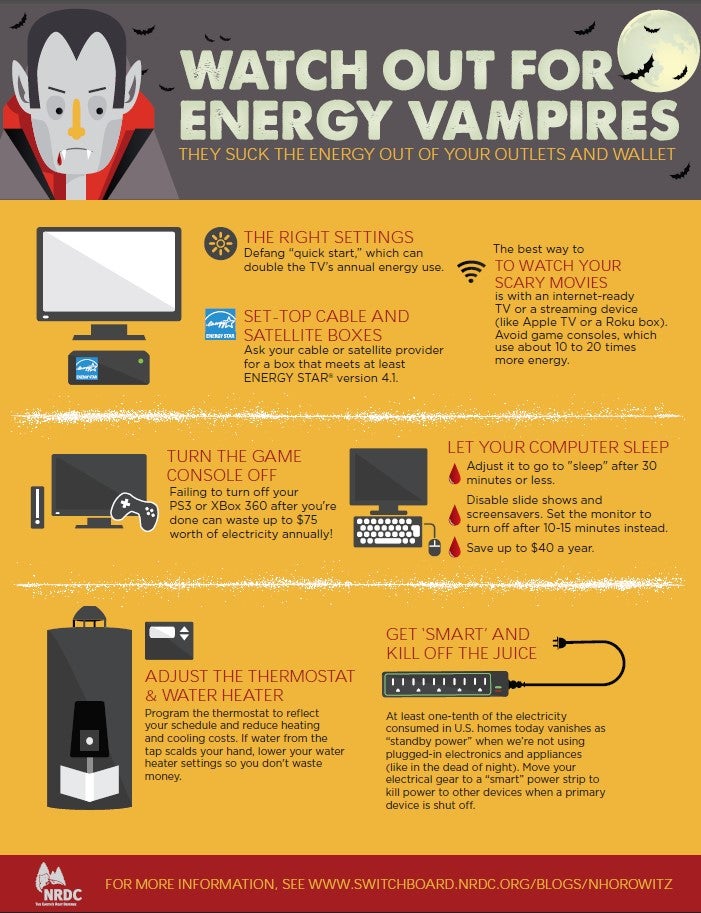
Image source: National Resources Defense Council
Taking a smart approach to energy bill savings
Another way to tame your high electric bill is through the use of power strips – particularly smart power strips. These devices have some outlets that are always on and those that only turn on when they sense a device that needs power.
If you haven’t already burnt out the last of your incandescent light bulbs, you may want to change them out now and switch to compact fluorescent bulbs (CFLs), which are much more efficient than your old light bulbs. LED bulbs are even better and thanks to their growth and popularity, they’ve become much more affordable, as well. In fact, replacing five of your most used old bulbs with LEDs can save you $75 a year in energy costs.
The biggest energy hoggers in a home are typically related to heating and cooling. But before you go ahead and replace your entire HVAC system and windows, first consider modest measures, such as turning the heating down in the winter and cooling down during summer – as these alone can save you hundreds of dollars per year.
If that doesn’t reduce your electricity costs enough, consider a smart thermostat. These programmable devices can help ease your heating and cooling costs. Smart thermostats offer a variety of functions, including:
- Only operating when you’re home
- Sensing when you’re in the room
- Learning your temperature preferences based on time of day
Here’s a great guide to the most popular choices for smart thermostats: https://www.solarreviews.com/blog/ecobee-vs-nest-which-smart-thermostat-offers-the-best-benefits
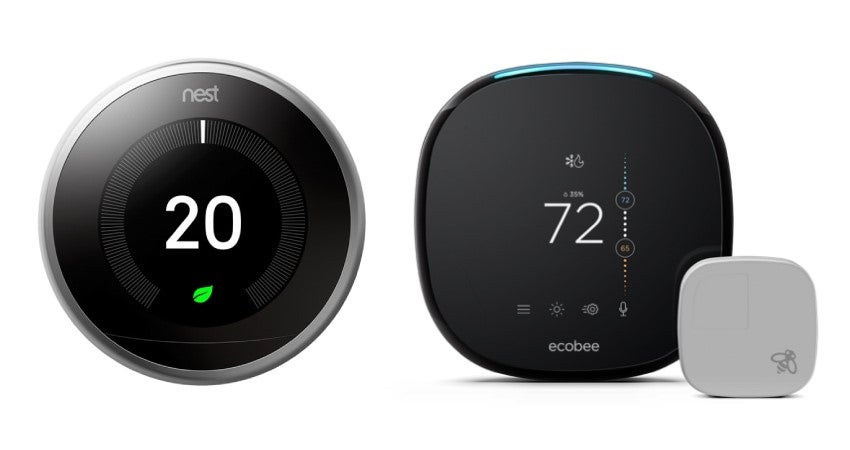
Image source: Solar Reviews
Is it time to go solar?
The most effective approach to reducing your high electric bill is by going solar and adding energy storage to your home. Homeowners across the US are finding they can take control of their electric bills and produce their own energy through the use of solar power. You can learn more about how much it would cost (and how much you can save) by going solar with the handy solar calculator at Solar-Estimate.org.


